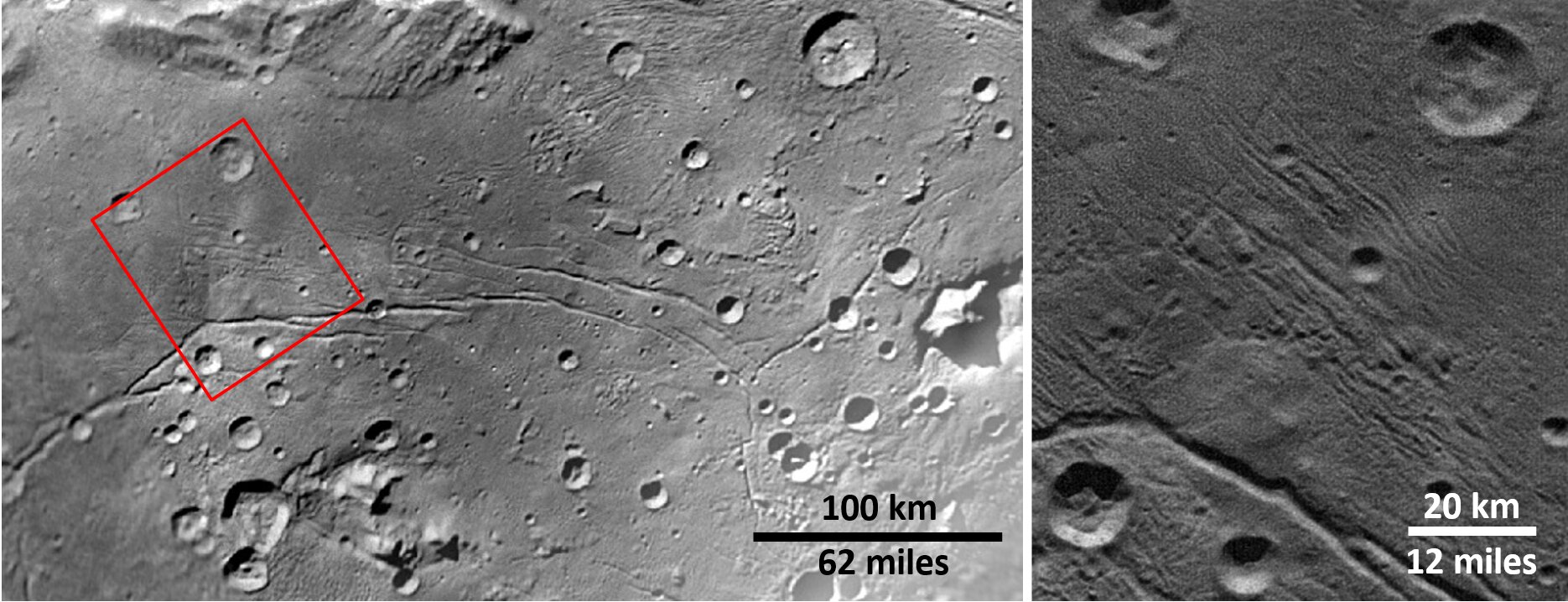The New Horizons spacecraft transferred a lot of important scientific data. Aside from taking a first close look of the dwarf planet Pluto in 2015, the spacecraft also visited the objects in the Kuiper belt, particularly the Ultima Thule object which is important for discovering more about the evolution of our solar system. Now, scientists discovered that small Kuiper belt objects (KBOs) are rare, using the data from the planet it visited over three and a half years ago.
New Horizons imaging revealed that there were fewer than expected small craters on Pluto’s largest satellite Charon. This could indicate that there were a smaller number of impactors from 300 feet to 1 mile in diameter in the Kuiper Belt.
The Kuiper belt is considered the second rocky ring in the solar system after the Asteroid Belt beyond the Red Planet. The Kuiper belt is located beyond Neptune’s orbit, being a donut-shaped home to various icy objects such as comets. Scientists believe that the small Kuiper Belt objects are considered a “feedstock” from which the planets from the solar system formed, and their research published in the journal Science reveals more about how the solar system formed.
“These smaller Kuiper Belt objects are much too small to really see with any telescopes at such a great distance,” SwRI’s Dr. Kelsi Singer, the paper’s lead author and a co-investigator of NASA’s New Horizons mission said in a statement. “New Horizons flying directly through the Kuiper Belt and collecting data there was key to learning about both large and small bodies of the Belt.”
“This breakthrough discovery by New Horizons has deep implications,” the mission’s principal investigator, Dr. Alan Stern, also of SwRI said. “Just as New Horizons revealed Pluto, its moons, and more recently, the KBO nicknamed Ultima Thule in exquisite detail, Dr. Singer’s team revealed key details about the population of KBOs at scales we cannot come close to directly seeing from Earth.”
Scientists observe the craters on the solar system’s objects, which reveal how many smaller bodies caused impacts. New Horizons data suggests that small Kuiper Belt objects are rare in particular. Scientific observations of Pluto and its satellite Charon found many geological features such as mountains that are as high as 12,000 feet, nitrogen ice glaciers and much more. There were some violent geological processes on the planet which erased some of its history of previous impacts, but Charon’s geological stasis showed how many impacts have come from the Kuiper belt. Based on the moon’s data, scientists found that small Kuiper Belt objects are rare.
The typical planetary models of our solar system show that our solar system formed 4.6 billion years ago as a result of the gravitational collapse of a molecular cloud, while our star and planets formed from some of the material that collapsed. That process is called accretion.
“This surprising lack of small KBOs changes our view of the Kuiper Belt and shows that either its formation or evolution, or both, were somewhat different than those of the asteroid belt between Mars and Jupiter,” said Singer. “Perhaps the asteroid belt has more small bodies than the Kuiper Belt because its population experiences more collisions that break up larger objects into smaller ones.”





